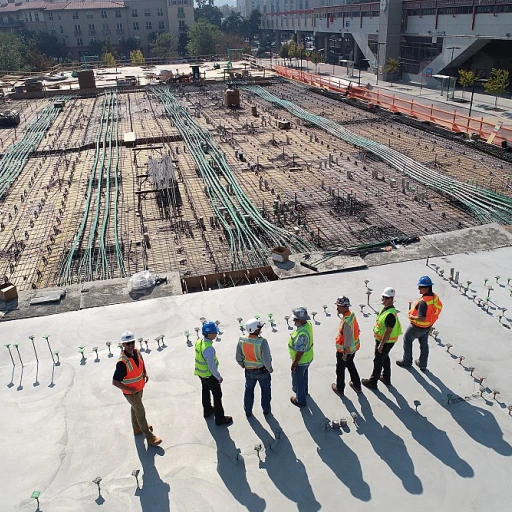
Understanding Talent Management System 2.0
Unraveling the Next-Gen Talent Management System
In today's business landscape, understanding the evolution of a modern talent management system is crucial for any Chief Human Resources Officer striving for success. These systems have transformed over the years from basic tracking of employee data into sophisticated platforms that are integral to employee lifecycle and development. They are no longer just about hiring and firing; they encompass an array of processes aimed at refining performance management, enhancing employee retention, and empowering the workforce through skills development.
Modern talent management systems serve as an engine for career development, providing both employers and employees with the tools to set clear goals and foster an environment where top talent can thrive. They integrate advanced management strategies and intelligent management software to aid in performance management, succession planning, and leadership development.
One pivotal component of these systems is the capability to drive digital transformation within companies. By incorporating elements like artificial intelligence, businesses can gain insights into how to improve their processes and ensure their talent, especially high-performing employees, are well-positioned in the organization's army of resources.
As companies continue to focus on long-term strategies, the importance of a comprehensive talent management system in the arsenal of a CHRO can't be understated. To delve deeper into how workplace communication tools play a significant role in this arena, explore more on communication tools every CHRO should know.
The Evolving Role of the CHRO
The Transformative Responsibilities of the Modern CHRO
In today’s rapidly evolving business landscape, the role of the Chief Human Resources Officer (CHRO) has become more integral to company success than ever before. Traditionally seen as the overseer of employee management, the CHRO is now pivotal in driving forward-thinking management strategies that align with company objectives and focus on long-term talent retention.
The modern-day CHRO is deeply embedded in shaping the policies and systems that support the workforce through every stage of the talent management process. This includes overseeing performance management, ensuring effective succession planning, and advocating for leadership development programs. Their insights are crucial in creating a reliable system that nurtures not only high-performing individuals but fosters an environment where every employee can thrive.
Additionally, CHROs are tasked with implementing management software that effectively monitors employee experience and development. They must ensure these digital tools align with career development goals, enabling employees to develop the skills needed for their current roles and future advancement. With a focus on goal setting and learning opportunities, a CHRO’s role is essential to maintaining a productive and engaged workforce.
The shift towards digital transformation necessitates that CHROs embrace new technologies such as artificial intelligence to manage employees and predict workforce trends. This evolution in function also requires a focus on communication tools to enhance collaboration across companies, facilitating the sharing of knowledge and business strategies.
By taking on these expanded responsibilities, CHROs are transforming the employee experience, aligning it more closely with company missions and goals. Their proactive approach in adopting modern systems and management talent practices is critical to ensuring organizations are prepared for future challenges.
Key Features of Modern Talent Management Systems
Building Blocks of Modern Talent Management Architecture
In an era where businesses are continually pushing for digital transformation, modern talent management systems have become indispensable in optimizing processes related to talent acquisition, development, and retention. Such systems are not merely about streamlining human resources operations but also about enhancing the overall employee experience and aligning it with the organization's strategic goals. Modern talent management platforms are equipped with robust features, aiming to facilitate seamless talent management across multiple facets within an organization. For those in human resources or aspiring to climb the ladder to becoming a Chief Human Resources Officer (CHRO), understanding these elements is crucial for strategically driving both short-term and long-term objectives.- Integration with Performance Management: One of the key features is the integration of performance management capabilities. These systems offer tools for goal setting and tracking, performance reviews, and feedback mechanisms that enable employees and managers to actively participate in continuous development. It lays the foundation for a high-performance culture within the company.
- Succession Planning and Career Development Modules: An essential aspect of these systems is their ability to support leadership development and succession planning. Identifying and grooming top talent to fill future leadership roles ensures the company has a ready army of skilled leaders, therefore maintaining a high level of business continuity and resilience.
- Advanced Analytics and Data-Driven Decisions: By leveraging data, organizations can drive management strategies based on actionable insights. Artificial intelligence and analytics tools integrated within these systems provide visibility into talent trends, allowing companies to make informed strategic HR decisions. Insights into workforce skills can influence recruitment, learning development, and performance initiatives.
- Employee Engagement Features: To retain high-caliber employees, modern systems must engage employees effectively. By offering personalized learning and career development options, these systems contribute to enhanced employee engagement and satisfaction levels, which in turn boosts retention.
- Flexibility and Scalability: These systems must also be adaptable to the evolving needs of businesses. From small enterprises to global corporations, talent management solutions should grow with the company, supporting both current and future needs.
Challenges in Implementing Talent Management Systems
Overcoming Obstacles in Talent Management Implementation
Implementing a modern talent management system can be a daunting task for any company, regardless of its size or industry. The challenges are multifaceted, often requiring a strategic approach to ensure successful integration and adoption. Here are some of the key hurdles organizations face:
- Resistance to Change: One of the most common challenges is resistance from employees and management. People are often comfortable with existing processes and may be reluctant to adopt new systems, fearing disruption to their daily routines.
- Integration with Existing Systems: Many companies already have established systems for HR, performance management, and employee development. Integrating a new talent management system with these existing platforms can be complex, requiring careful planning and execution.
- Data Management: A modern talent management system relies heavily on data. Ensuring data accuracy, security, and privacy is crucial. Companies must establish robust data management processes to handle sensitive employee information effectively.
- Customization and Scalability: Every business has unique needs, and a one-size-fits-all approach rarely works. The system must be customizable to align with the company’s specific talent management strategies and scalable to grow with the organization.
- Training and Support: Adequate training and ongoing support are essential to ensure that employees can effectively use the new system. Without proper training, the system may not be utilized to its full potential, impacting overall performance and employee experience.
- Cost and Resource Allocation: Implementing a new system requires a significant investment of time and resources. Companies must carefully consider the costs involved and allocate resources efficiently to avoid budget overruns.
Addressing these challenges requires a comprehensive approach that involves leadership development, effective communication, and a focus on long-term career development for employees. By understanding the evolving role of the CHRO and leveraging data for strategic HR decisions, companies can enhance their talent management systems and drive high performance across the workforce.












